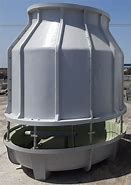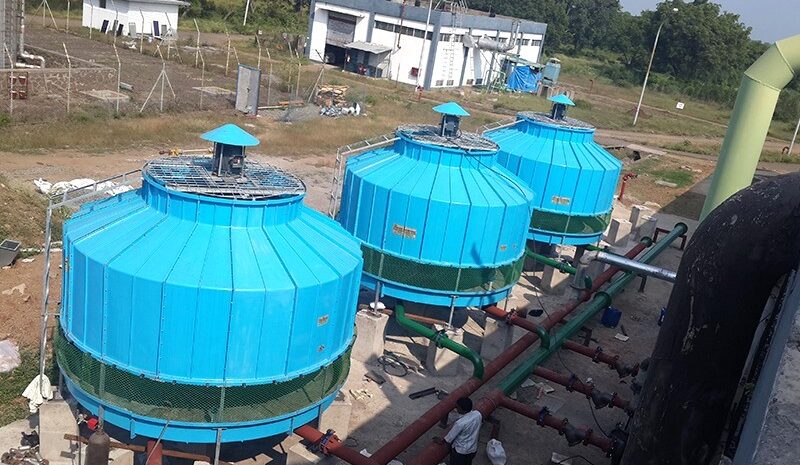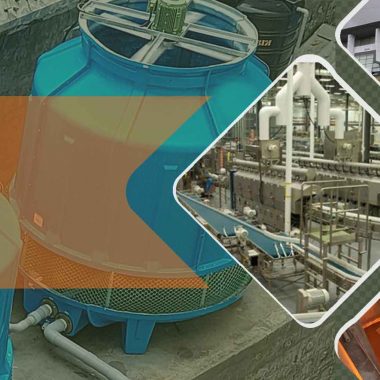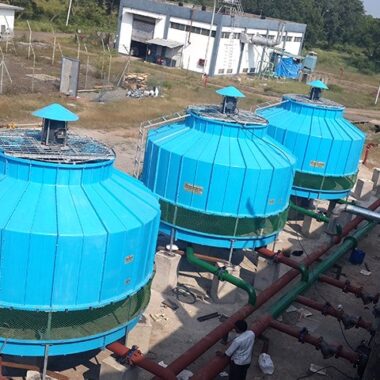Basics of Round Cooling Towers
Basics of Round Cooling Towers
Round cooling towers are famous structures commonly seen in industrial and commercial settings, noiselessly disseminating heat and maintaining ideal working conditions for different forms. Let’s dive into the basics of round cooling towers:
1. Structure and Design:
Round cooling towers highlight a cylindrical shape, frequently supported by a sturdy system or concrete base. The tower is ordinarily comprised of a shell or casing encasing the cooling components, including the fill media and fan get together.
2. Cooling Principle:
The primary work of round cooling towers is to remove heat from industrial forms or HVAC systems. Usually accomplished through the process of vanishing, where warm water from the process is circulated through the tower, permitting a parcel of it to evaporate and carry away heat.
3. Fill Media:
Inside the tower, fill media gives a large surface zone for the water to spread out and come into contact with the air. This maximizes the evaporation rate and improves the cooling efficiency of the tower.
4. Airflow:
Round cooling towers depend on common or constrained airflow to encourage the cooling handle. As warm water cascades over the fill media, air is drawn through the tower by fans or normal draft, advancing evaporation and heat transfer.
5. Fan Assembly:
In mechanically aided cooling towers, a fan gathering is mounted at the best of the tower to actuate airflow. These fans are regularly driven by electric motors and can be balanced to control the airflow rate based on cooling requests.
6. Water Distribution System:
Water is distributed evenly over the fill media by a distribution system, regularly comprising of spray nozzles or distribution basins. This guarantees uniform coverage and ideal contact between the water and discuss for proficient heat transfer.
7. Drift Eliminators:
To minimize water misfortune and avoid the escape of water droplets or mist from the tower, drift eliminators are introduced at the best of the tower. These gadgets capture water beads entrained within the airflow and redirect them back into the tower.
8. Makeup Water and Blowdown:
Makeup water is included to the tower to compensate for water lost through dissipation and drift. Occasional blowdowns are too performed to remove dissolved solids and impurities from the circulating water, maintaining water quality and preventing scale buildup.
9. Control Systems:
Modern round cooling towers are prepared with advanced control systems to screen and optimize tower operation. These systems control fan speed, water stream rates, and other parameters to ensure productive cooling whereas minimizing energy consumption.
10. Applications:
Round cooling towers discover a wide range of applications over businesses such as power generation, chemical preparing, HVAC systems, and fabricating forms. They play a crucial part in maintaining hardware efficiency and preventing overheating in industrial operations.
11. Environmental Considerations:
Efforts are made to play down the environmental affect of round cooling towers, counting the utilize of water-saving technologies, ecofriendly materials, and energy-efficient operation. Additionally, sound constriction measures may be utilized to reduce noise pollution.
Round cooling towers epitomize the marriage of form and function, consistently integrating into industrial landscapes whereas silently performing the vital assignment of heat dissipation. Understanding their basic standards permits for the appreciation of their part in maintaining prepare efficiency and environmental sustainability across a spectrum of industrial applications.

Basics of Round Cooling Towers





Maintenance Tips for Round Cooling Towers - Cool Fab Equipments March 14, 2024 at 10:43 pm
[…] Maintaining round cooling towers is fundamental for optimizing their execution, guaranteeing productive heat dissipation, and extending their lifespan. Here are a few maintenance tips to help optimize the execution of round cooling towers: […]
The Environmental Impact of Round Cooling Towers - Cool Fab Equipments March 14, 2024 at 11:31 pm
[…] Round cooling towers, like other types of cooling towers, have both positive and negative environmental impacts. Understanding these impacts is crucial for making informed decisions with respect to their utilize and execution. Here’s a breakdown of the environmental impact of round cooling towers: […]